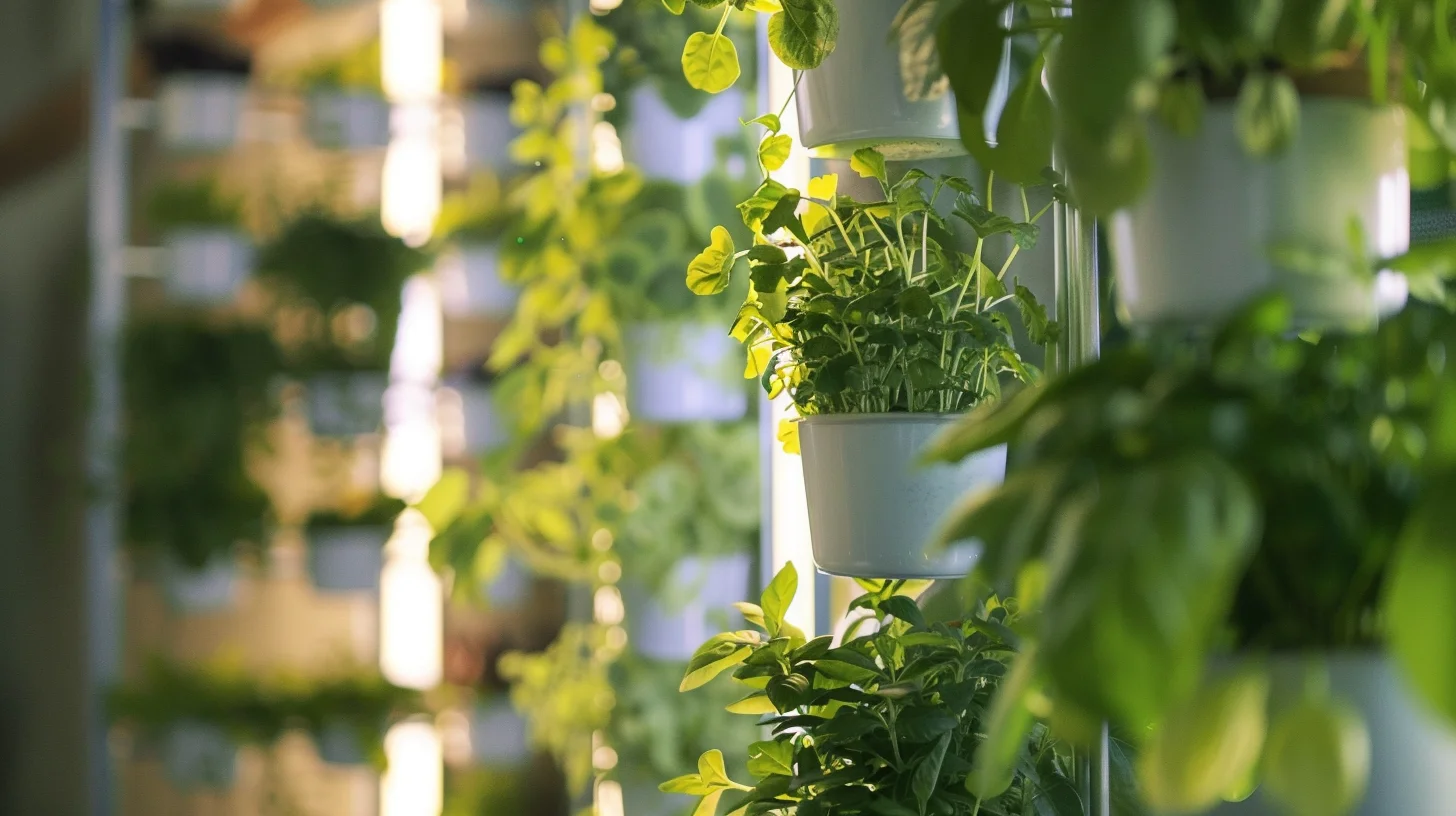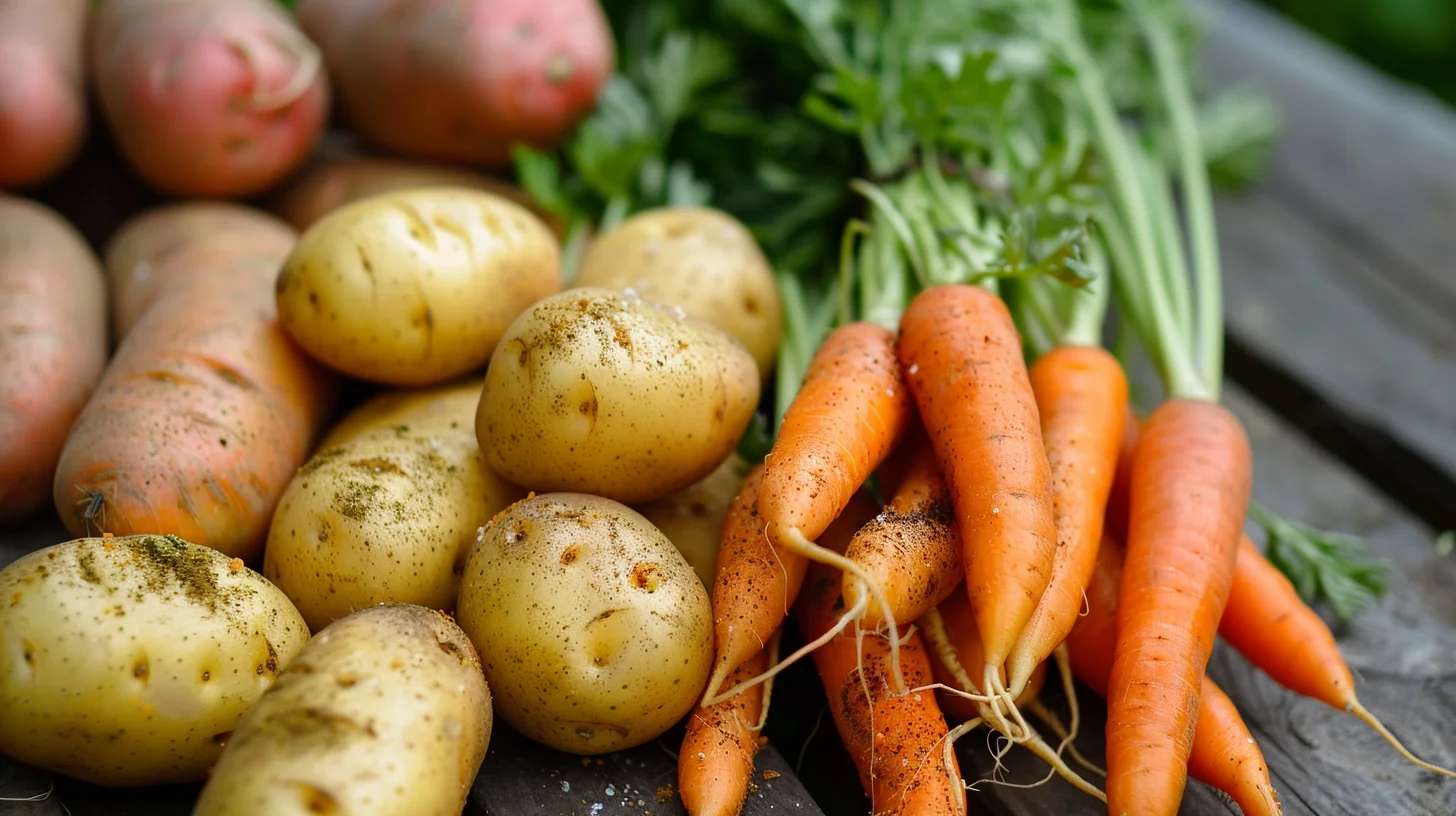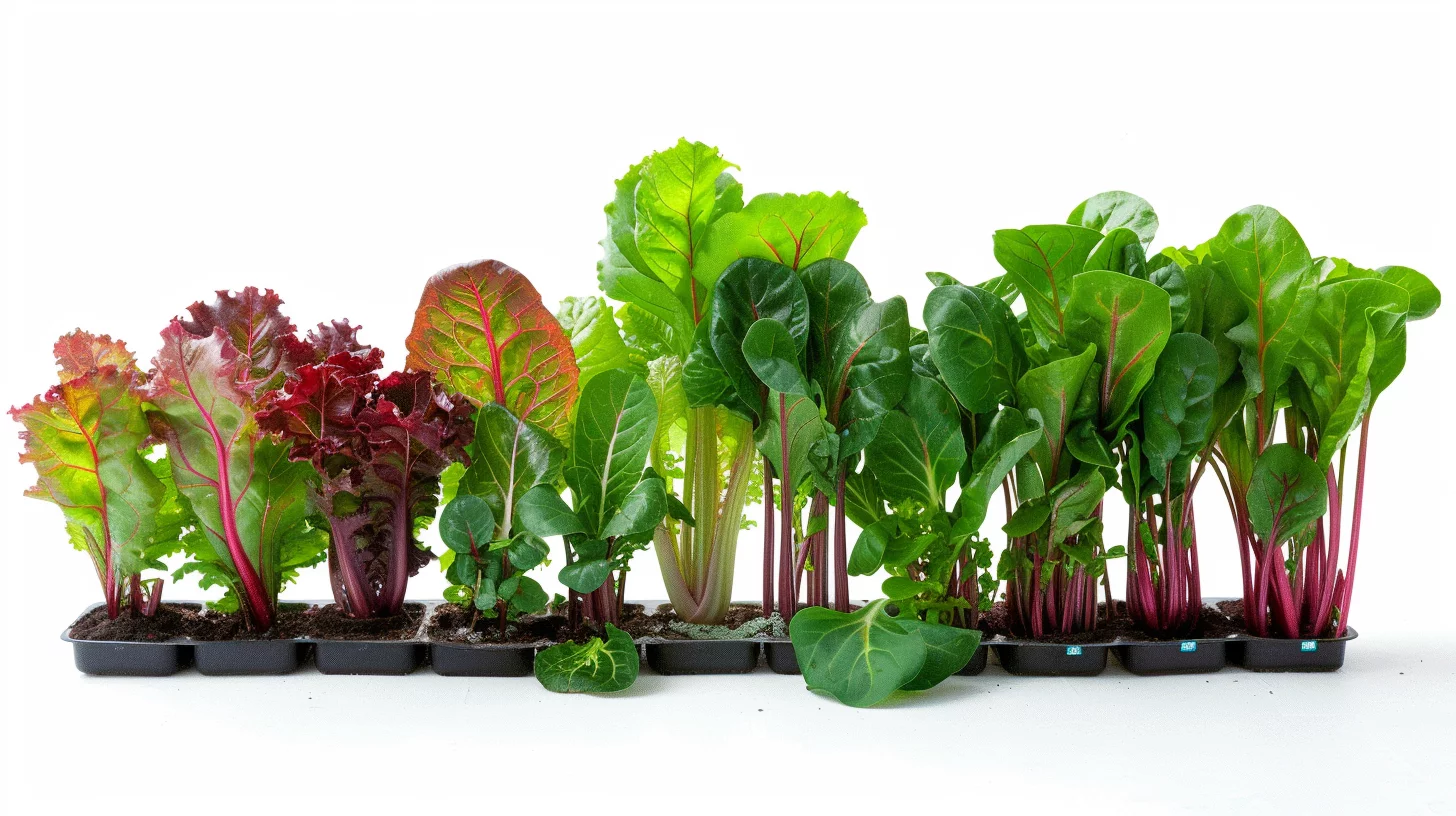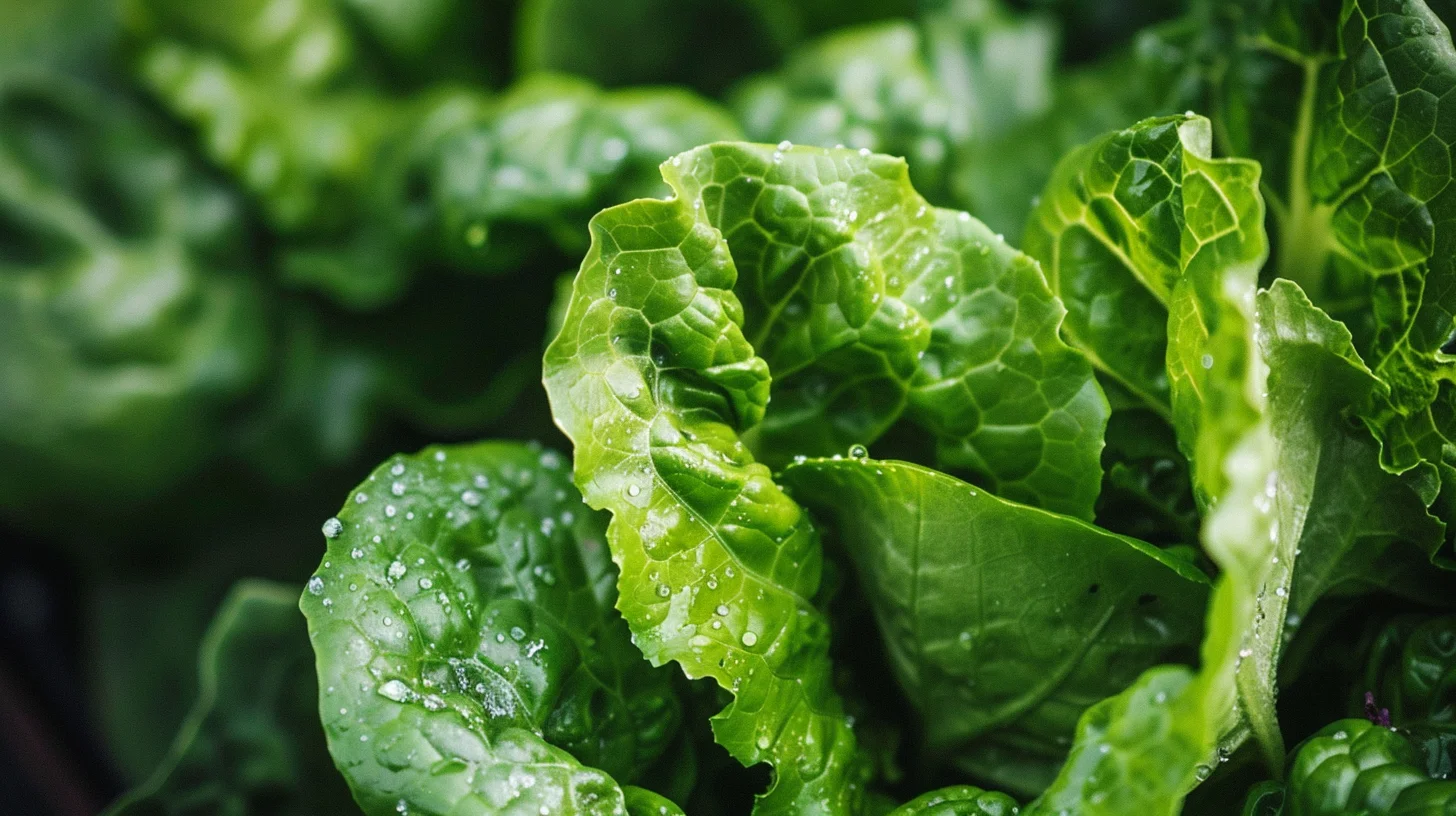Vertical hydroponics is a revolutionary gardening method that allows you to grow plants in a space-saving, efficient manner. By stacking plants vertically and using nutrient-rich water instead of soil, you can maximize your yield and minimize your resource consumption. However, to ensure the success of your vertical hydroponic system, it’s crucial to choose the right plants. In this comprehensive guide, we’ll walk you through the factors to consider when selecting plants for vertical hydroponics and provide you with a list of the best plants to grow.
Understanding Vertical Hydroponics
Before we dive into plant selection, let’s first understand what vertical hydroponics is and how it works. Vertical hydroponics is a method of growing plants in a vertical arrangement, using a nutrient-rich water solution instead of soil. This system offers several advantages over traditional gardening:
- Space-saving: By growing plants vertically, you can maximize your growing space and cultivate more plants in a smaller area.
- Efficient nutrient and water usage: Hydroponic systems recirculate water and nutrients, reducing waste and ensuring that plants receive the optimal amount of nutrition.
- Increased yield: With proper care and management, vertical hydroponic systems can produce higher yields compared to traditional soil-based gardening.
However, vertical hydroponics also presents some challenges, such as:
- Lighting requirements: Ensuring that all plants receive adequate light can be challenging in a vertical setup.
- Nutrient distribution: Providing a balanced nutrient solution to all plants in the system requires careful monitoring and adjustment.
- Pest and disease control: Maintaining a clean and healthy environment is crucial to prevent the spread of pests and diseases.
Factors to Consider When Choosing Plants for Vertical Hydroponics
To choose the right plants for your vertical hydroponic system, consider the following factors:
1. Light Requirements
Different plants have varying light requirements, so it’s essential to match your plant selection with the available lighting in your setup. Consider the light intensity and duration that your plants need and ensure that your system can provide adequate lighting for all plants.
2. Nutrient Requirements
Plants require a balanced mix of macronutrients (such as nitrogen, phosphorus, and potassium) and micronutrients (such as iron, manganese, and zinc) to thrive. When choosing plants for your vertical hydroponic system, consider their specific nutrient needs and ensure that your nutrient solution can meet those requirements. Additionally, monitor the pH levels and electrical conductivity (EC) of your nutrient solution to maintain optimal growing conditions.
3. Growth Habits and Size
Plant growth habits and size are crucial factors to consider when selecting plants for vertical hydroponics. Some plants have a determinate growth habit, meaning they grow to a specific size and then stop, while others have an indeterminate growth habit, continuing to grow and produce fruits or flowers throughout the season. Choose plants with growth habits and sizes that are compatible with your vertical hydroponic setup.
4. Compatibility with Hydroponic Systems
Not all plants are well-suited for hydroponic systems. When choosing plants, consider their root structure and growth, as well as their sensitivity to moisture and humidity. Some plants, such as leafy greens and herbs, adapt well to hydroponic conditions, while others may require more specific care and attention.
5. Environmental Conditions
Consider the temperature and humidity preferences of your chosen plants, as well as their air circulation requirements. Ensure that your vertical hydroponic system can maintain the optimal environmental conditions for your plants to thrive.
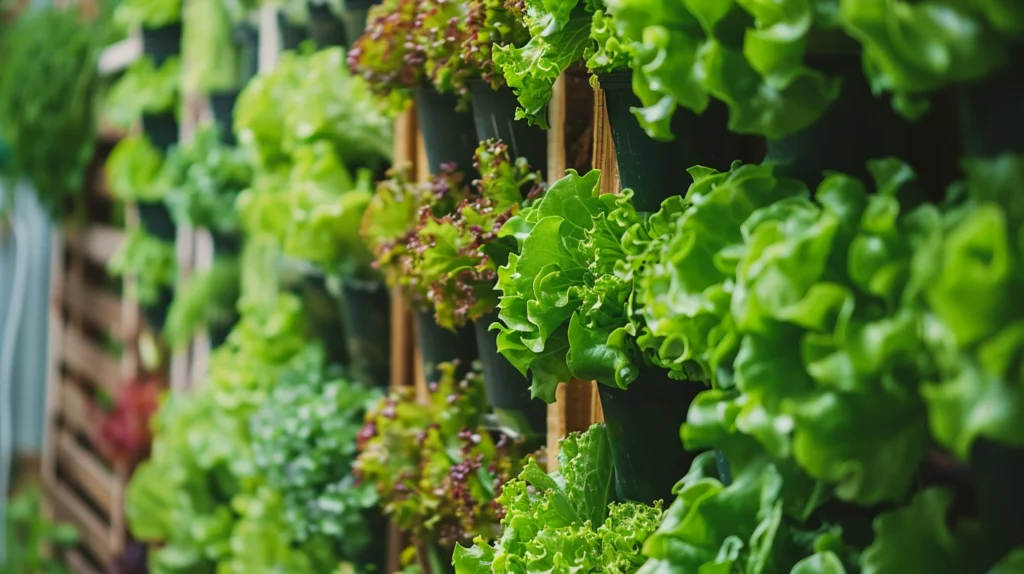
Top Plants for Vertical Hydroponics
Now that we’ve covered the factors to consider when choosing plants for vertical hydroponics, let’s explore some of the best plants to grow in your system.
Leafy Greens
Leafy greens are an excellent choice for vertical hydroponics due to their fast growth, compact size, and adaptability to hydroponic conditions. Some popular leafy greens to grow include:
- Lettuce (various types, such as butterhead, romaine, and oakleaf)
- Spinach
- Kale
- Swiss chard
Herbs
Herbs are another great option for vertical hydroponics, as they grow quickly and require minimal space. Some herbs to consider include:
- Basil
- Mint
- Cilantro
- Parsley
Fruiting Plants
While fruiting plants may require more space and attention than leafy greens and herbs, certain compact varieties can be successfully grown in vertical hydroponic systems. Some options include:
- Strawberries
- Cherry tomatoes
- Peppers (compact varieties)
- Cucumbers (compact varieties)
Microgreens
Microgreens are young, tender greens that are harvested just a few weeks after germination. They are packed with nutrients and flavor, making them a popular choice for vertical hydroponic systems. Some microgreens to consider include:
- Broccoli
- Radish
- Sunflower
- Pea shoots
| Plant Type | Examples | Benefits |
|---|---|---|
| Leafy Greens | Lettuce, Spinach, Kale, Swiss Chard | Fast growth, compact size, adaptable |
| Herbs | Basil, Mint, Cilantro, Parsley | Quick growth, minimal space requirements |
| Fruiting Plants | Strawberries, Cherry Tomatoes, Peppers, Cucumbers | Compact varieties suitable for vertical hydroponics |
| Microgreens | Broccoli, Radish, Sunflower, Pea Shoots | Nutrient-dense, flavorful, fast-growing |
Tips for Optimizing Plant Growth in Vertical Hydroponics
To ensure the success of your vertical hydroponic garden, follow these tips:
- Proper spacing and arrangement: Arrange your plants with adequate spacing to ensure that each plant receives sufficient light and airflow.
- Pruning and training techniques: Regularly prune and train your plants to maintain their shape and promote healthy growth.
- Monitoring and adjusting nutrient solutions: Regularly test and adjust your nutrient solution to ensure that your plants receive the optimal balance of nutrients.
- Pest and disease prevention strategies: Implement preventive measures, such as using beneficial insects and maintaining a clean growing environment, to minimize the risk of pest and disease outbreaks.
- Harvesting and post-harvest handling: Harvest your plants at the right time and properly store and handle your produce to maintain quality and freshness.
Common Mistakes to Avoid
To prevent issues in your vertical hydroponic system, avoid these common mistakes:
- Overcrowding plants: Ensure that your plants have enough space to grow and receive adequate light and airflow.
- Neglecting nutrient balance and pH levels: Regularly monitor and adjust your nutrient solution to maintain optimal growing conditions.
- Inadequate lighting: Provide sufficient lighting for all plants in your vertical hydroponic system.
- Poor air circulation and ventilation: Ensure that your growing environment has proper air circulation and ventilation to prevent stagnant air and moisture buildup.
- Ignoring signs of stress or deficiencies: Regularly inspect your plants for signs of stress or nutrient deficiencies and address any issues promptly.
Frequently Asked Questions
- Can all plants be grown in vertical hydroponics?
While many plants can be grown in vertical hydroponic systems, some plants are better suited than others. Focus on plants with compact growth habits, moderate nutrient requirements, and adaptability to hydroponic conditions. - How often should I change the nutrient solution?
The frequency of nutrient solution changes depends on factors such as plant type, growth stage, and system size. As a general rule, change your nutrient solution every 1-2 weeks, or when the nutrient levels or pH become imbalanced. - What are the signs of nutrient deficiencies in plants?
Common signs of nutrient deficiencies include yellowing or discoloration of leaves, stunted growth, and poor fruit or flower development. Regularly monitor your plants and consult a nutrient deficiency chart to identify and address any issues. - How do I control pests in a vertical hydroponic system?
To control pests in your vertical hydroponic system, implement preventive measures such as using beneficial insects, maintaining a clean growing environment, and regularly inspecting your plants. If an infestation occurs, use organic or hydroponic-safe pest control methods. - Can I mix different types of plants in the same system?
Yes, you can mix different types of plants in the same vertical hydroponic system, as long as they have similar growing requirements (e.g., light, nutrients, and environmental conditions). However, it’s essential to monitor each plant’s growth and adjust the system as needed to ensure the success of all plants.
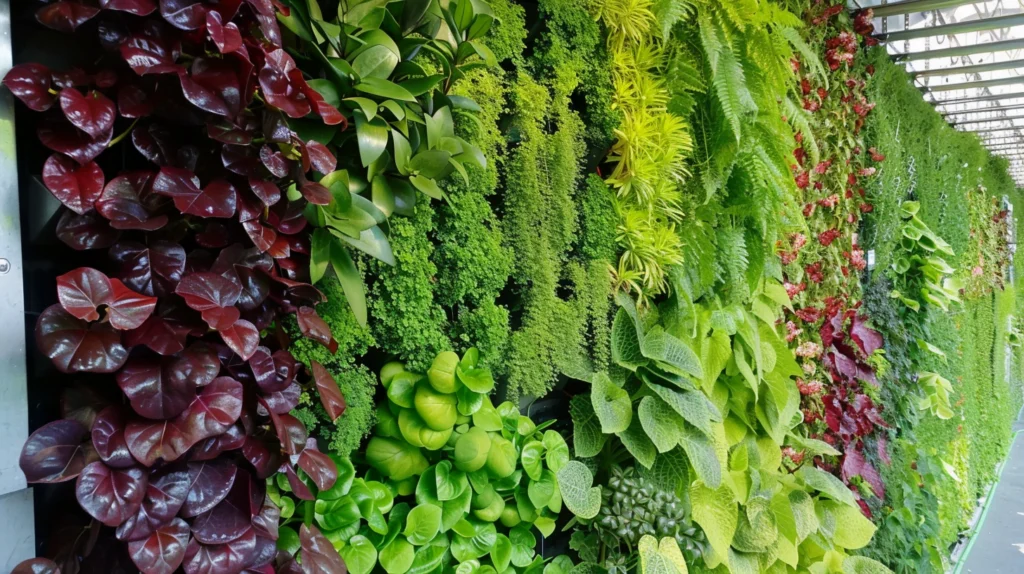
Conclusion
Choosing the right plants for your vertical hydroponic system is crucial for success. By considering factors such as light requirements, nutrient needs, growth habits, and compatibility with hydroponic conditions, you can select plants that will thrive in your setup. Remember to provide proper care and maintenance, monitor your plants regularly, and address any issues promptly. With the right plant selection and management, you can enjoy a bountiful harvest from your vertical hydroponic garden.
